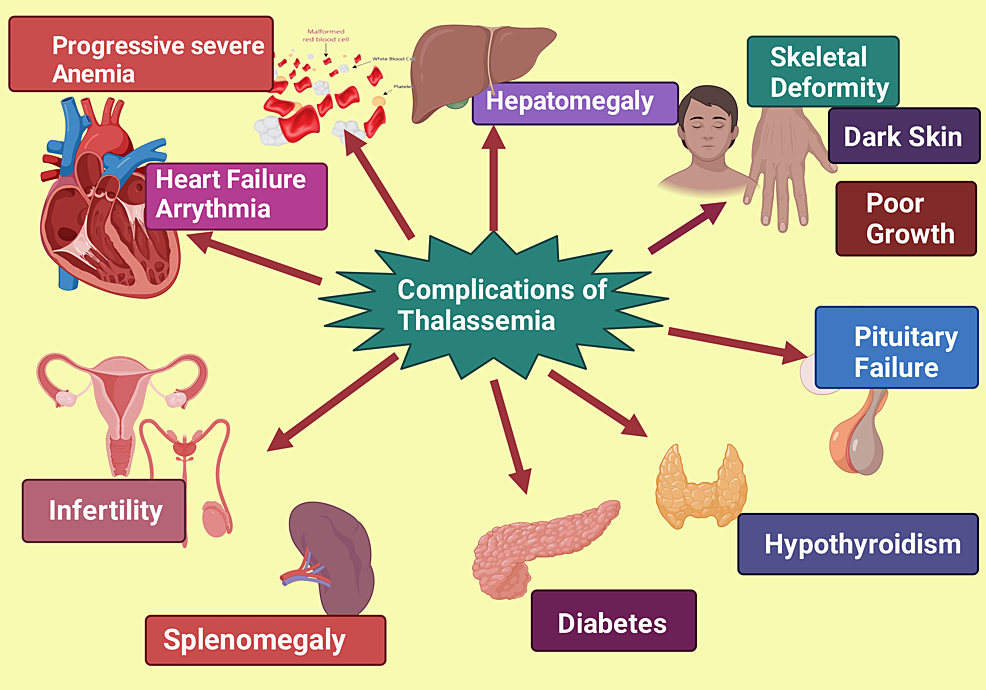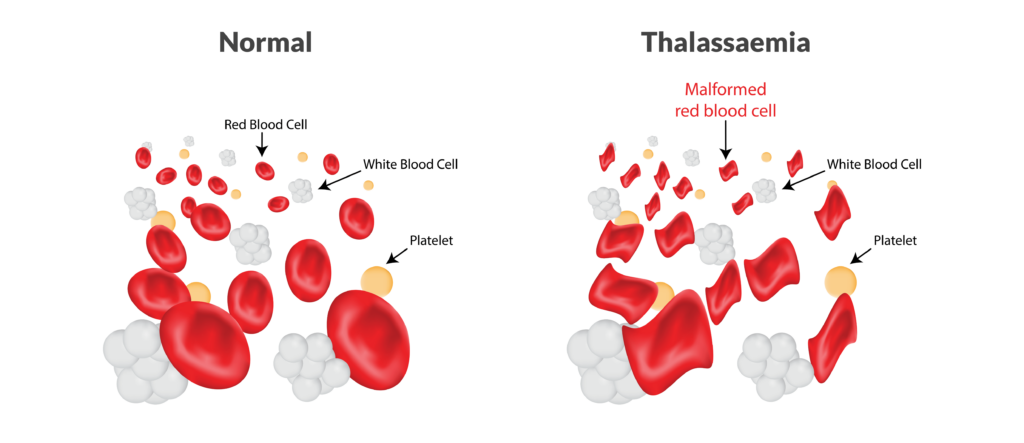Living with Thalassemia isn’t just a medical challenge—it’s a financial one too. Imagine a world where the simple act of maintaining health demands a constant stream of financial resources. For many families dealing with Thalassemia, this is an everyday reality. Thalassemia, a genetic blood disorder, can strain financial resources, requiring regular blood transfusions, chelation therapy, and ongoing medical care. The good news is there are numerous avenues of financial assistance available, but navigating them can feel like trying to find your way through a dense forest without a map.
In this article, we will explore the landscape of financial assistance for Thalassemia patients. We’ll look at the types of help available, from government programs to non-profit organizations and private insurance. We’ll dive into the nitty-gritty of applying for aid, overcoming common obstacles, and making the most out of available resources. By the end of this journey, you’ll be better equipped to find the support needed to ease the financial burden and focus on what truly matters—health and wellbeing.
What is Thalassemia?
Thalassemia is a genetic blood disorder that affects the body’s ability to produce haemoglobin, the protein in red blood cells that carries oxygen throughout the body. When haemoglobin production is disrupted, it can lead to anaemia, fatigue, and other serious health issues. There are several types of Thalassemia, each varying in severity and symptoms.
Types of Thalassemia
Thalassemia is primarily categorized into two types: Alpha Thalassemia and Beta Thalassemia. Alpha Thalassemia occurs when there are defects in the genes that code for the alpha-globin protein. Beta Thalassemia, on the other hand, involves defects in the beta-globin genes. Each type has its subtypes, ranging from mild to severe forms, such as Thalassemia minor, intermedia, and major.
Symptoms and Diagnosis
Symptoms of Thalassemia can vary depending on its severity. In mild cases, there may be few or no symptoms, while severe Thalassemia can lead to fatigue, weakness, pale skin, and more serious complications such as organ damage. Diagnosis typically involves blood tests to check for anaemia and genetic tests to confirm the presence of Thalassemia.
Global Prevalence of Thalassemia
Thalassemia is most prevalent in regions such as the Mediterranean, the Middle East, Southeast Asia, and India. However, due to global migration, it is now found in many other parts of the world. It is estimated that millions of people worldwide carry the genetic trait for Thalassemia, with thousands of children born with the disorder each year.
The Financial Burden of Thalassemia
Managing Thalassemia involves more than just medical treatment; it encompasses a financial journey that can be daunting for many families. The costs associated with Thalassemia care are multifaceted and ongoing.
Costs Associated with Thalassemia Treatment and Care
The primary costs for Thalassemia patients include regular blood transfusions, iron chelation therapy to remove excess iron from the body, medications, and routine medical check-ups. These treatments are lifelong and can be expensive, even with health insurance coverage.
The Impact on Families’ Finances
The financial burden often extends beyond medical bills. Families may face indirect costs such as travel expenses for treatment, time off work, and the need for specialised dietary supplements. In many cases, one parent may need to reduce work hours or quit their job to care for a child with Thalassemia, further impacting the family’s income.
Emotional and Psychological Costs
The emotional and psychological toll of managing a chronic illness like Thalassemia cannot be understated. The stress of financial strain can lead to anxiety and depression, affecting both patients and their families. This highlights the importance of financial assistance not just as a means of covering costs but as a way to alleviate stress and improve overall quality of life.

Types of Financial Assistance Available
Fortunately, there are various sources of financial assistance available for Thalassemia patients. These resources can help alleviate the burden and ensure access to necessary treatments.
Government Programs and Subsidies
Many countries offer government programs that provide financial assistance for Thalassemia patients. These programs may cover the cost of medications, treatments, and other medical expenses, either partially or fully, depending on eligibility.
Non-Profit Organizations and Charities
Numerous non-profit organizations and charities are dedicated to supporting Thalassemia patients. They offer financial aid, resources, and emotional support to help patients and their families manage the condition effectively.
Private Health Insurance Options
Private health insurance can also be an essential component of managing Thalassemia. Some insurance plans offer coverage for treatments and medications, although it’s crucial to understand the benefits and limitations of each plan to ensure adequate coverage.
Government Support for Thalassemia Patients
Government support can be a lifeline for families affected by Thalassemia. Understanding the available programs and how to access them is vital for receiving the assistance needed.
National Health Schemes and Their Coverage
Many countries have national health schemes that offer financial assistance for Thalassemia patients. These schemes may provide coverage for blood transfusions, chelation therapy, and other necessary treatments. It’s essential to research what your country offers and how it aligns with your needs.
Eligibility Criteria for Government Assistance
Eligibility for government assistance varies by program and location. Factors such as income level, severity of the condition, and citizenship status can influence eligibility. It’s crucial to gather all required documentation and understand the application process to increase the chances of receiving support.
How to Apply for Government Support
Applying for government assistance can sometimes feel like navigating a bureaucratic maze. However, with the right information and preparation, it can be a manageable process. Start by contacting your local health department or social services agency to inquire about available programs and application procedures.
Non-Profit Organizations and Charitable Assistance
Non-profit organizations play a significant role in supporting Thalassemia patients by providing financial aid, resources, and advocacy.
Major Charities Supporting Thalassemia Patients
Several prominent charities focus on helping Thalassemia patients. Organizations such as the Thalassemia International Federation (TIF), Cooley’s Anemia Foundation, and regional groups provide financial assistance, support services, and educational resources.
Types of Support Provided by NGOs
Non-profit organizations offer various types of support, including direct financial aid for treatments, grants for research, and funding for community programs. They also provide educational resources to raise awareness about Thalassemia and advocate for patients’ rights.

How to Access Charitable Assistance
To access assistance from non-profit organizations, start by researching groups that focus on Thalassemia in your region. Contact them directly to inquire about available support and application processes. Many organizations have specific programs for different needs, so it’s essential to understand what each one offers.
Private Health Insurance and Thalassemia
Private health insurance can be a valuable tool in managing the costs associated with Thalassemia. However, understanding how it works and choosing the right plan is crucial.
Understanding Health Insurance for Chronic Conditions
Health insurance for chronic conditions like Thalassemia typically covers treatments, medications, and doctor visits. However, coverage can vary widely between plans, so it’s essential to read the fine print and understand what is included.
Benefits and Limitations of Private Insurance
While private insurance can provide essential coverage, it may not cover all costs. Limitations such as co-pays, deductibles, and exclusions can affect the overall cost of care. It’s vital to evaluate the benefits and limitations of each plan to determine the best fit for your needs.
Choosing the Right Insurance Plan for Thalassemia
Selecting the right insurance plan requires careful consideration of your specific needs and financial situation. Look for plans that offer comprehensive coverage for Thalassemia treatments, and consider factors such as premiums, deductibles, and provider networks.
International Support and Resources
In addition to local resources, there are international organizations and communities that provide support for Thalassemia patients worldwide.
Global Organizations Offering Support
Global organizations like the Thalassemia International Federation and the World Health Organization offer resources, advocacy, and support for patients. These groups work to raise awareness, promote research, and provide funding for programs that benefit Thalassemia patients.
Cross-Border Treatment Options
For some patients, cross-border treatment options may provide access to specialised care and advanced treatments not available locally. This can involve traveling to another country for medical care, which may be supported by certain organizations or government programs.
Online Resources and Community Support Groups
The internet offers a wealth of resources for Thalassemia patients and their families. Online forums, support groups, and educational websites can provide valuable information, emotional support, and a sense of community.
Challenges in Accessing Financial Assistance
Despite the availability of financial assistance, many patients face challenges in accessing the support they need.
Common Barriers to Obtaining Financial Aid
Common barriers include complex application processes, stringent eligibility criteria, and limited awareness of available programs. These challenges can discourage patients from seeking assistance, but understanding how to navigate them can make a significant difference.
Navigating Bureaucratic Processes
Dealing with bureaucratic processes can be overwhelming, but it’s essential to remain persistent and organized. Keep detailed records of all interactions, follow up regularly, and seek help from advocacy groups if needed.
Tips for Overcoming These Challenges
Overcoming challenges requires a proactive approach. Research all available options, gather necessary documentation, and reach out to support groups for guidance. Don’t hesitate to ask for help from healthcare professionals or social workers who can assist in navigating the system.
Conclusion
Financial assistance plays a crucial role in improving the quality of life for Thalassemia patients and their families. By understanding the available resources and how to access them, patients can alleviate the financial burden and focus on maintaining their health and wellbeing. Whether through government programs, charitable organizations, or private insurance, there are avenues of support available to help manage the costs associated with Thalassemia.
FAQs?
What are the main types of Thalassemia?
Thalassemia is primarily categorized into Alpha Thalassemia and Beta Thalassemia, each with its subtypes ranging from mild to severe.
How can I apply for government assistance for Thalassemia treatment?
To apply for government assistance, contact your local health department or social services agency for information on available programs and application procedures.
Are there any international charities that support Thalassemia patients?
Yes, organizations like the Thalassemia International Federation and Cooley’s Anemia Foundation offer support for Thalassemia patients worldwide.
What should I look for in a private health insurance plan for Thalassemia?
Look for plans that offer comprehensive coverage for treatments, medications, and doctor visits, and consider factors such as premiums, deductibles, and provider networks.
How do non-profit organizations help Thalassemia patients financially?
Non-profit organizations provide financial aid, resources, and advocacy to help patients manage the condition effectively.
Can Thalassemia patients receive free treatment anywhere?
Some countries offer free or subsidised treatment through national health schemes or charitable organizations. It’s essential to research what is available in your region.
What is the role of community support in managing Thalassemia?
Community support provides emotional and practical assistance, helping patients and families navigate the challenges of living with Thalassemia.